- Home
- Neil Gaiman
The View from the Cheap Seats Page 25
The View from the Cheap Seats Read online
Page 25
Take that as read. It’s true. In this book you’ll see beautiful Simon and Kirby work: you’ll watch Jack’s art move from the fluid and powerful work he was doing in the 1940s to something much closer to his later “Kirbyesque” style: jaws get craggier, anatomy and ways of representing things become more personal. You’ll see some art assists by others, as well: the Ditko work in particular is a delight (and I am sure I can see some Ditko pencils in there with Jack’s in the jungle Stuntman story).
There is praise aplenty out there for Jack Kirby. That’s not why I wanted to write this introduction. This is my chance to write about Joe Simon. I’ve never met Joe Simon, but he’s been a part of my life for over forty years. I wonder sometimes who I would be today, if not for Joe Simon.
After all, Joe Simon wrote Sandman. First he and Jack reinvented the mysterious night avenger with the gasmask (it was not they who put him into a yellow and purple skintight costume and gave him a kid sidekick, but they were the ones who made it work). And then, thirty years later, Joe Simon brought back the Sandman. He teamed up with Jack Kirby for the first time in many years for a one-shot, the Dream Stream incarnation of the Sandman, who had nothing in common with his predecessor except the name; an “eternal being, outside time” who, with the nightmares Brute and Glob in tow, rescued a boy named Jed from bad dreams and the things that were causing them. I bought my copy of Sandman #1 from a comics dealer in South London, put it into a bag, and began to wonder who this strange figure in his red and yellow costume was. The things that Joe didn’t explain were as powerful for me as the things that he did.
Nearly twenty years later, I would write Sandman.
Joe Simon (who created Captain America and so much else) was doing more, always, than just writing comics, but Joe Simon is a remarkable writer of comics. In his 1940s heyday he wrote comics that were always powerful, always filled with energy and madness, stories that simply never stopped moving. They were filled with larger-than-life characters, with strange caricature-villains. They were pure story, filled with Joe Simon’s own energy, which was unlike anyone else’s. And, very often, even if lopsidedly, they were funny.
He did little work for DC Comics in the sixties and seventies: He wrote Brother Power the Geek, the story of a dressmaker’s dummy who comes to life as a hippy, and is fired off into space, and Prez, a comic about the first teenage president of the USA. They were drawn by Jerry Grandenetti. In the only issue of Swamp Thing I ever wrote, I brought Brother Power the Geek back down to Earth. Later, with artist Michael Allred, I would retell the story of Prez, from Prez #1, as if it were a synoptic gospel. I love playing with Joe Simon’s toys. One of the first projects I pitched to DC Comics was a revival of Boy Commandos, 1987 style, another great Simon and Kirby comic from the 1940s.
But none of those were the things that would change my life. Sandman was. And it started with the Simon/Kirby Sandman from the 1970s—wondering what would happen if you took him a little more seriously, wondering why he dressed like that, what the sand was for, whether he looked different if he was in someone else’s dream.
I talked about my ideas to DC Comics’ former president Jenette Kahn and editor Karen Berger when they were in England, and some months later wound up being invited to write a monthly Sandman comic, but to use my ideas about Joe’s work as a jumping-off point and do something else (since writer Roy Thomas would be writing his own stories using the Simon/Kirby Sandman). It changed my life, and I owe it to Joe Simon.
And I think what attracted me to Simon’s stories was how unlike anyone else’s they were, how full of life. He created strange villains: part cartoon, part caricature, part embodiment of whatever he wished to talk about. While the trends in comics were towards realism in writing, Joe Simon marched in the opposite direction, creating his own reality. One of my favorite early-twentieth-century American authors is Harry Stephen Keeler, a mystery writer who wrote stories that were, in terms of plot, dialogue, and geography, nothing like anyone else’s. He was derided for it at the time, but is now collected and remembered while many of his contemporaries are forgotten. He was an odd writer. Joe Simon plotted more efficiently than Keeler, but, like Keeler, he wrote stories that no one else could have written, and they linger in the memory and in the heart.
The oddness of Joe Simon’s work is where it gets its power.
Joe Simon stories—and the Simon and Kirby stories you’ll read in this book—make no pretense of being anyone else’s art or stories. They are in motion all the way, or almost: they begin with something happening, they pile on the event, and only end, when they end, at the final panel, or the penultimate, leaving a final panel of exposition and explanation and plot wrap almost as an afterthought: they hurtle until they stop.
Here you’ll see that pattern over and over. And you’ll see stories and characters that shouldn’t work, or rather, that under anyone else’s hand wouldn’t work, that work like a dream.
Jack Kirby was inimitable, and the Simon-Kirby team was inimitable.
These are things that people who love comics know.
But you know something else? There’s never been another Joe Simon.
* * *
The Introduction to The Simon and Kirby Superheroes, 2010.
* * *
The Spirit of Seventy-Five
The first Spirit comic I bought was the Harvey Spirit #2. I bought it from Alan Austin’s shop, which was not a shop but a basement with occasional opening hours, in those antediluvian days of 1975 when there were no comic shops, somewhere in South London.
It was the last day of school. And instead of doing all the things we were meant to do on the last day of school, I snuck out of school and got on a bus with my friend Dave Dickson, and went off to South London. Dave was a lot smaller than me, and had hurt his foot recently. (I have not told anyone this story for fifteen years. But back when I did tell it, if Dave was around he would leap in early and tell people he had hurt his foot, at the beginning of the story. So they knew.) On the way to the shop we were mugged, very badly. Badly is probably not quite the word I want to use. Ineptly might be closer to the truth. The mugger was only a little older than we were, skinny and extremely nervous. He was trailing along behind us.
“Eh,” he shouted. We carried on walking.
“Eh,” he said again. We were getting further away from him.
He ran alongside us and shouted, “Hey! I’ve got a knife in my pocket. Give me your money.”
I looked him up and I looked him down and, with the arrogance and refusal to be impressed of a fourteen-year-old boy, I told him, “You have not got a knife in your pocket.”
“Yes, I do.”
“You don’t.”
“Do.”
“You have not got a knife in your pocket.” I mean, he didn’t have a knife. I was almost certain that he didn’t have a knife.
“I do.”
“No, you don’t. Show it to me. If you’ve got a knife, let’s see it.”
I started to suspect that I was going to win this particular argument. At any rate, he said, “Look, whether or not I’ve got a knife in my pocket, give me your money.”
“No.”
“Why not?”
“Because,” I said flatly, “it’s my money. Not yours. Now go away.”
And he seemed ready to leave, when Dave Dickson, who was quite terrified (and who had, remember, hurt his foot), stammered out the first thing he had said during the whole mugging. He said, “How much do you want?”
And our mugger turned back to me and said, “How much have you got?”
I thought about this. I had forty English pounds on me: money I had saved up over the whole term, saved for this end-of-term comics-buying blowout. More money than I had ever had on me at one time in my whole fourteen-year-old life. (It would probably have been equivalent to about a hundred 1975 dollars.)
“I’ve got twenty pence on me,” I told him, grudgingly. “But I need ten pence for the bus home.”
“Give
me ten pence then,” said the mugger.
So I did, and he went away. “You weren’t a lot of help,” I told Dave.
“I hurt my leg,” he said. “So I couldn’t run away. It was all right for you. You could have run away.”
When we got to the basement comic shop, it was closed. We knocked on the door until it was opened.
“Go away,” said Alan Austin. “We’re closed.”
“But,” I said, “we came all the way here from Croydon, and we got mugged and I’ve got all my money for the whole term with me!”
I think it was the mugging that impressed them, more than the money. Anyway, they let us in. I bought lots of old comics, but all I remember now is Sandman #1, Creepy #1, and The Spirit #2. We read them on the bus, on the way home. I thought The Spirit was the coolest thing in the whole world.
“I’m Plaster of Paris, the toast of Montmartre, I stick to my man until death us do part!” That was one of the stories in there. I had no idea that the stories I was reading were over-thirty-year-old reprints: they were as up-to-date and immediate as anything I had ever read.
I had always wanted to be a writer of comics: now I decided I was also going to be a comic artist when I grew up, and to celebrate this decision, I drew a picture of the Spirit with his shirt ripped and everything. I sent it to Comics Unlimited, a British fanzine edited by the same Alan Austin who owned the basement comic shop. The drawing came back with a letter from Alan, telling me that they had recently improved the standard of their fan art, and now they had people like Jean-Daniel Brèque drawing for them, and they were sorry they couldn’t print it. I decided that I wouldn’t be a comics artist when I grew up after all.
By the time I was seventeen I had stopped buying comics. There was nothing I wanted to read that I could find in comics anymore; I became quite grumpy about the medium. Except for the Spirit. I kept reading and buying Spirit reprints—the older Warren ones and the current Kitchen Sink ones. The stories never palled and the joy of reading them never faded. (A couple of years later, as a young journalist, I was very jealous of my school friend Geoff Notkin, who was studying at the School of Visual Arts in New York, under Will Eisner himself. This seemed almost unfair somehow, like getting God in to run your Bible studies group.)
And then time went on, and all of a sudden, I was writing comics.
Since being a comics-writing person, I have met Will on many occasions, all over the world: in Germany and San Diego and Dallas and Spain.
I remember watching Will receive an award for life achievement in Germany, the thrill of seeing a thousand people on their feet and clapping until their hands hurt and then we still clapped, and Will looked modestly embarrassed, and Ann Eisner beamed like a lighthouse.
The last time we met was on the north coast of Spain, where the world fades out into a kind of warm autumnal haze. We spent almost a week together, Will and Ann, and Jaime and Koko Hernandez, and me, a tight-knit fraternity of people who spoke no Spanish. One day Ann and Will and I walked down along the edge of the sea. We walked for a couple of miles, talking about comics, and the medium, and the history of the medium, and the future of comics, and the Spirit, and the people Will had known. It was like a guided tour of the medium we loved. I found myself hoping that when I got to be Will’s age I could be that sharp, that wise, that funny.
I told Will, when we were walking, that even when I stopped reading comics I read The Spirit, and I told him that it was his Spirit stories that had left me wanting to write comics, and that the Sandman, like the Spirit, was conceived as a machine for telling stories.
But I didn’t tell him that a drawing of the Spirit began and ended my career as a fan artist. Nor did I ever tell him just how badly I was mugged, on my way to buy my first Spirit.
* * *
I wrote this for the Chicago Comics Convention “ashcan” tribute to Will Eisner in 1996.
* * *
The Best of the Spirit
It isn’t yet easy or comfortable for me to write about Will Eisner. He was too important, and making notes for this introduction reminded me how much I miss Will Eisner my friend, and rereading the stories in here reminded me that I miss Will Eisner the storyteller, the craftsman, the dreamer, the artist. Which is probably the wrong place to start something that is an unabashed celebration of part of Will Eisner’s work, but it’s nonetheless true.
When Will Eisner died he was as respected and as revered around the world as he would let us respect and revere him. He was a teacher and an innovator. He started out so far ahead of the game that it took the rest of the world literally sixty years to catch up.
Will’s life is, in miniature, a history of American comics. He was one of the very first people to run a studio making commercial comic books, but while his contemporaries dreamed of getting out of the comics ghetto and into more lucrative and respectable places—advertising, perhaps, or illustration, or even fine art—Will had no desire to escape. He was trying to create an art form.
There are arguments today about whether or not Will was actually the first person to coin the term “graphic novel” for his book of short stories A Contract with God, the book that kicked off the third act of Will’s creative life. There are far fewer arguments about what Will actually did in the 1940s with the Spirit stories, or about the influence Will had on the world of comics all through his creative life—and that his stories had too.
I’ll step forward here: I bought my first copy of The Spirit in 1975, in a basement comics shop in South London. I saw it hanging on a wall, and I knew that, whatever it was, I wanted it. I would have been about fourteen. It was the second (and final) issue of Harvey Comics’ Spirit reprints, and reading it on the train home I had no idea that the stories I was reading were thirty years old at the time. They were fresher and smarter than anything I’d seen in comics—seven-page stories that somehow managed to leave out everything that wasn’t the story, while telling wonderful tales of beautiful women and unfortunate men, of human fallibility and of occasional redemption, stories through which the Spirit would wander, bemused and often beaten up, a McGuffin in a mask and hat.
I loved The Spirit then. I loved the choices that Will made, the confidence, the way the art and the story meshed. I read those stories and I wanted to write comics too.
Two or three years later I stopped reading comics, disappointed and disillusioned by the medium as only a sixteen-year-old can be, but even then I kept reading The Spirit—I would go to London and bring back copies of the Kitchen Sink reprints, and the Warren reprints, and read them with unalloyed pleasure, such that when, as a twenty-five-year-old, I decided it was time to learn how to write comics, I went out and bought Will Eisner’s Comics and Sequential Art, and pored over it like a rabbinical student studying his Torah.
As a respectable adult, twenty years later, Will Eisner’s work on The Spirit makes me remember why I wanted to write comics in the first place.
The joy of The Spirit, as soon as it had become what it was going to be, which was more or less once Eisner came back from the war in 1945 and reassumed control of the comic (published as a Sunday supplement in newspapers at the time, an avenue that allowed Eisner, who was always a wise businessman, the creative control and ownership he could never have had at that time on the newsstands), was not in the words, nor in the pictures, but in the smoothness and the brilliance and the willingness to experiment of the storytelling. In seven pages—normally less than sixty panels—Eisner could build a short story worthy of O. Henry, funny or tragic, sentimental or hard-bitten, or simply odd. The work was uniquely comics, existing neither in the words nor in the pictures but in the place where the words and the pictures come together, commenting on each other, reinforcing each other. Eisner’s stories were influenced by film, by theater, by radio, but were ultimately their own medium, created by a man who thought that comics was an art form, and who was proved right—but who might not have been quite so right if he had not built such a solid body of work, both in The Spirit
and in the work he did from 1976 until his death, if he had not taught and inspired along the way.
A lot of the delight in The Spirit is in watching Eisner invent and discover new ways of telling stories—the use of white space and panels to represent freedom and captivity in one story, the echoing, reflecting dual panels in another, the use of the murderer’s point of view in a third. The stories in this book are, in addition to being astoundingly entertaining, a lesson in how to tell stories in comics form. “ACTION MYSTERY ADVENTURE” the panel on the top right of each Spirit splash page tells us—and to those three things one could add humor, craft, pathos, wisdom, and the most beautiful (and dangerous) women in comics.
In a world in which the idea of graphic novels—big, thick collections of comics that have heft and value—is becoming widespread and accepted, bookshops, librarians and individuals want to know what the important books are, to know which books are vital to have on their shelves. There are a few books that no self-respecting collection of graphic novels should be without, after all—Maus, for example, or Watchmen, or Jimmy Corrigan, or Bone. I’d like to suggest that this book, as an example of what the young Will Eisner could do, should be added to that set and guaranteed a place on those shelves. The postwar Spirit was a masterpiece, in the strict sense of the word—a piece of work that demonstrates that a young journeyman has now become a master of his craft.
If you enjoy these tales there are more where they came from—many more, I’m happy to say. DC Comics has been publishing The Spirit Archives for several years now, and the material in the book you are holding is a selection from those volumes: a few early stories to give you context, and some stories, as good as, as interesting as, as exciting as, other Eisner Spirit stories. Which, if you’re looking for ACTION MYSTERY ADVENTURE, not to mention the rest, is pretty much as good as it gets.

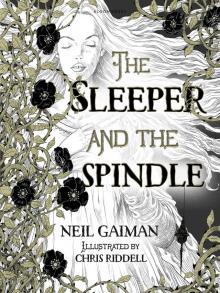 The Sleeper and the Spindle
The Sleeper and the Spindle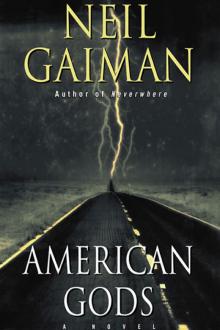 American Gods
American Gods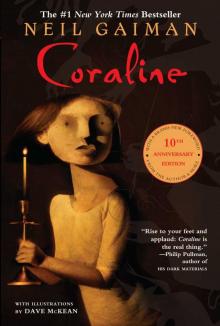 Coraline
Coraline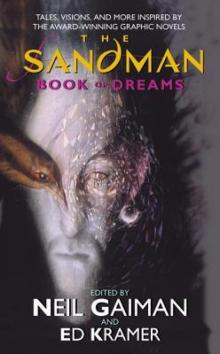 The Sandman: Book of Dreams
The Sandman: Book of Dreams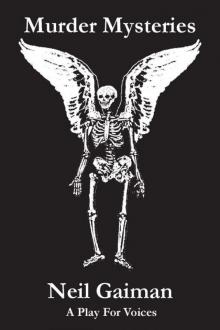 Murder Mysteries
Murder Mysteries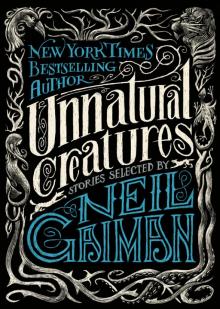 Unnatural Creatures
Unnatural Creatures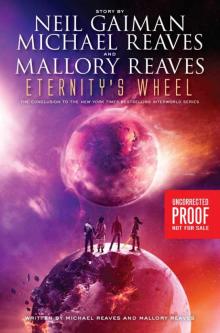 Eternity's Wheel
Eternity's Wheel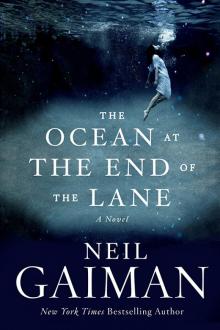 The Ocean at the End of the Lane
The Ocean at the End of the Lane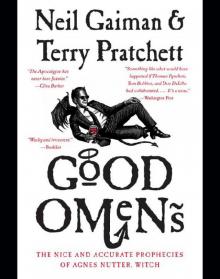 Good Omens
Good Omens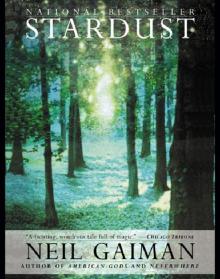 Stardust
Stardust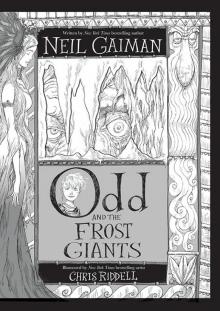 Odd and the Frost Giants
Odd and the Frost Giants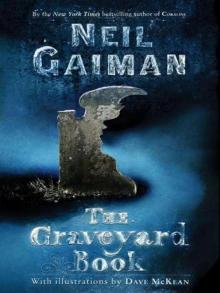 The Graveyard Book
The Graveyard Book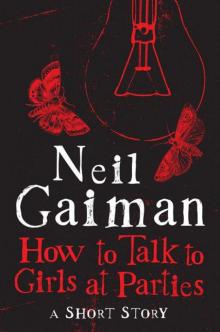 How to Talk to Girls at Parties
How to Talk to Girls at Parties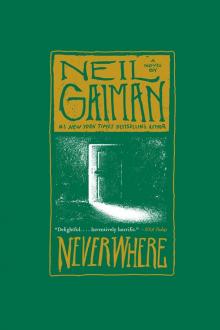 Neverwhere
Neverwhere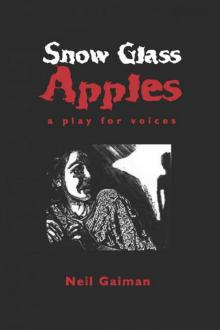 Snow, Glass, Apples
Snow, Glass, Apples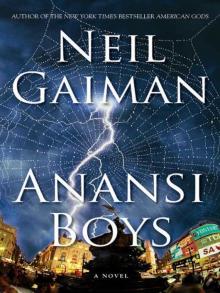 Anansi Boys
Anansi Boys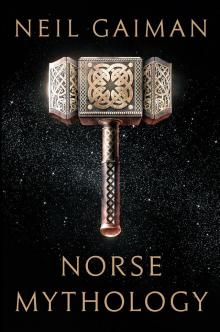 Norse Mythology
Norse Mythology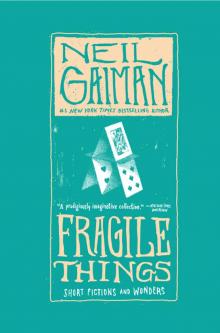 Fragile Things: Short Fictions and Wonders
Fragile Things: Short Fictions and Wonders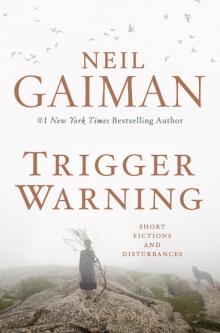 Trigger Warning: Short Fictions and Disturbances
Trigger Warning: Short Fictions and Disturbances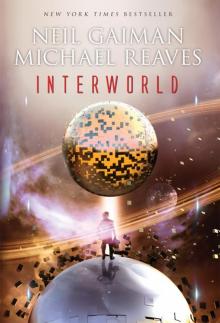 InterWorld
InterWorld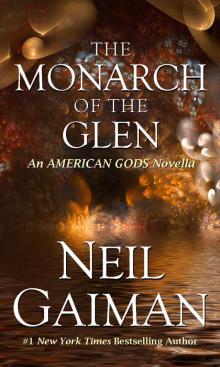 The Monarch of the Glen
The Monarch of the Glen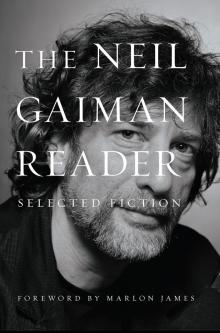 The Neil Gaiman Reader
The Neil Gaiman Reader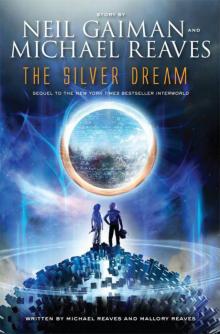 The Silver Dream
The Silver Dream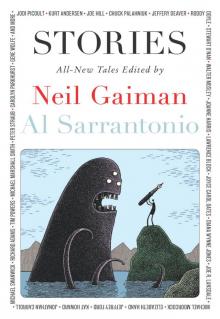 Stories
Stories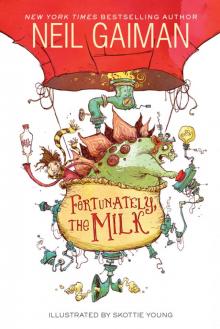 Fortunately, the Milk
Fortunately, the Milk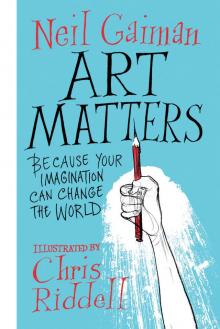 Art Matters
Art Matters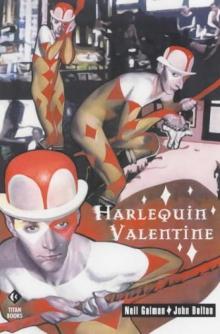 Harlequin Valentine
Harlequin Valentine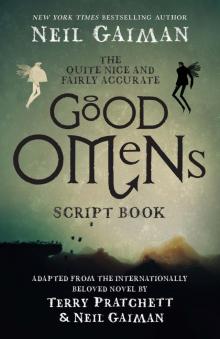 The Quite Nice and Fairly Accurate Good Omens Script Book
The Quite Nice and Fairly Accurate Good Omens Script Book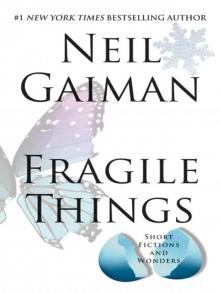 Fragile Things
Fragile Things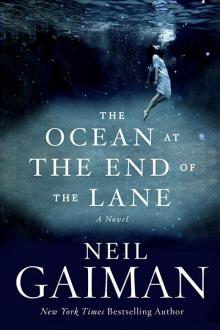 The Ocean at the End of the Lane: A Novel
The Ocean at the End of the Lane: A Novel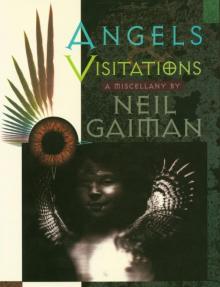 Angels and Visitations
Angels and Visitations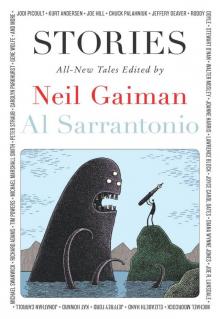 Stories: All-New Tales ngss-1
Stories: All-New Tales ngss-1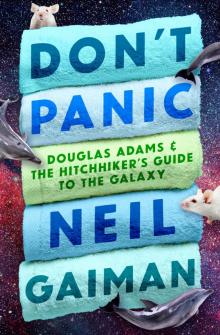 Don't Panic
Don't Panic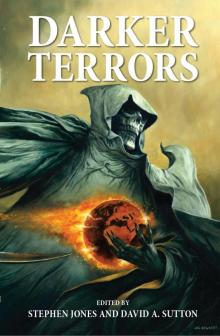 Darker Terrors
Darker Terrors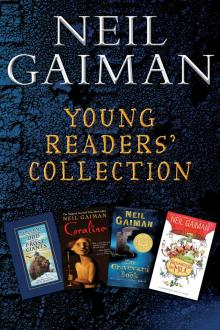 Neil Gaiman Young Readers' Collection
Neil Gaiman Young Readers' Collection A Study In Emerald
A Study In Emerald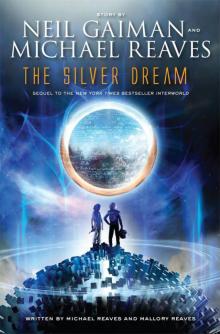 The Silver Dream: An InterWorld Novel
The Silver Dream: An InterWorld Novel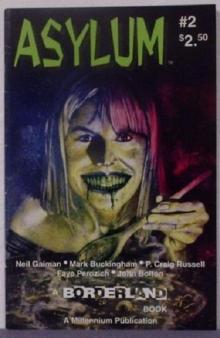 Feeders and Eaters
Feeders and Eaters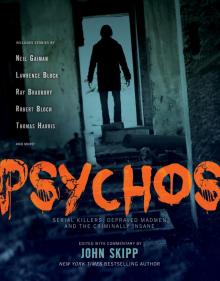 Psychos
Psychos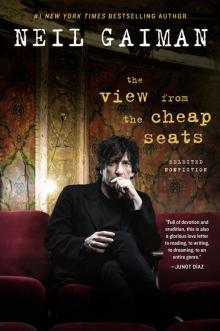 The View from the Cheap Seats
The View from the Cheap Seats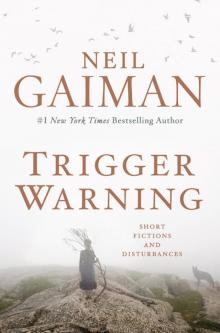 Trigger Warning
Trigger Warning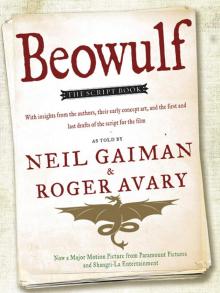 Beowulf
Beowulf Nessun Dove
Nessun Dove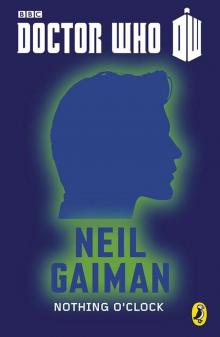 Doctor Who: Nothing O'Clock: Eleventh Doctor: 50th Anniversary
Doctor Who: Nothing O'Clock: Eleventh Doctor: 50th Anniversary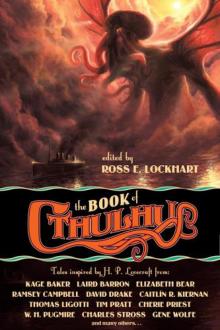 The Book of Cthulhu
The Book of Cthulhu